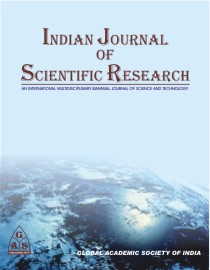BEHAVIOUR OF FIBRE REINFORCED CONCRETE UNDER IMPACT AND FLEXURE...
ABSTRACT
The present study examines the behavior of fiber reinforced concrete when exposed to flexural loading by varying the
type and percentage of fiber in the designated M-25 concrete mix design. The designated M-25 concrete mix was designed using the
IS 10262 (2009) and types of fiber used were 6mm chopped polyester and glass fiber. After conducting several lab tests it was found
that the flexural strength of concrete was increased by marginal 10 % by using the fibers mentioned. This type of concrete can be
used not only to withstand compressive load but it can take nominal amount of tensile load also. In conventional concrete, microcracks
develop before structure is loaded because of drying shrinkage and other causes of volume change. When the structure is
loaded, the micro cracks open up and propagate because of development of such micro-cracks, results in inelastic deformation in
concrete. Fibre reinforced concrete (FRC) is cementing concrete reinforced mixture with more or less randomly distributed small
fibres. In the FRC, a numbers of small fibres are dispersed and distributed randomly in the concrete at the time of mixing, and
thus improve concrete properties in all directions. The fibers help to transfer load to the internal micro cracks. FRC is cement
based composite material that has been developed in recent years.



